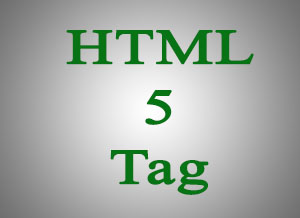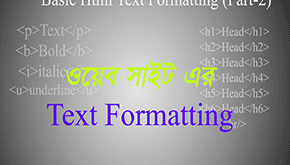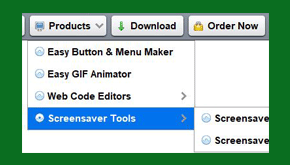HTML5 Element List, tags is the last version of Hypertext Markup language.it have many Features of Create Effective Web page Coding it gives us Many Features which give me batter and effective Coding.
You can view another article :
HTML5 Element List, tags
5 Best CSS Learning Website
10 best Web Design Learning Site(Free)
What is HTML
HTML stands for machine-readable text terminology. Developed by somebody Tim Berners-Lee in 1990, hypertext mark-up language is that the “hidden” code that helps US communicate with others on the globe Wide net (WWW).
HTML5 Element List hypertext mark-up language, you add “tags” to the text so as to make the structure. These tags tell the browser a way to show the text or graphics within the document. for instance, the subsequent document contains an easy layout (structure). Notice there square measure 3 major parts: a heading, 2 paragraphs and a bulleted list.
What is HTML5
HTML5 is the most recent specification of the HTML language and depicted significant separate previous markup practices. the aim of the various, profound changes to the language was to standardize the various new ways that during which developers were mistreatment it, additionally on encourage one set of best practices with regards to internet development.HTML5 Element List
- Encouraging linguistics (meaningful) markup
- Separating style from content
- Promoting accessibility and style responsiveness
- Reducing the overlap between HTML, CSS, and JavaScript
- Supporting made media experiences whereas eliminating the necessity for plugins like Flash or Java
HTML5 Elements / APIs
HTML5 is the next generation of HTML and will become the new standard for HTML, XHTML, and the HTML DOM. In addition, HTML5 adds many new features.
To support the new features, HTML5 adds new elements and APIs.
The following table lists the tags in HTML5.
| Tag | Description |
| <!–…–> | Defines a comment |
| <!DOCTYPE> | Defines the document type |
| <a>Changed | Defines a hyperlink |
| <abbr> | Defines an abbreviation |
| <address> | Defines an address element |
| <area> | Defines an area inside an image map |
| <article> | Defines an article |
| <aside> | Defines content aside from the page content |
| <audio> | Defines sound content |
| <b>Changed | Defines bold text |
| <base> | Defines a base URL for all the links in a page |
| <bdi> | Defines a span of text that is isolated from its surroundings for the purposes of bidirectional text formatting |
| <bdo> | Defines the direction of text display |
| <blockquote> | Defines a long quotation |
| <body> | Defines the body element |
| <br> | Inserts a single line break |
| <button> | Defines a push button |
| <canvas> | Defines graphics |
| <caption> | Defines a table caption |
| <cite> | Defines a citation |
| <code> | Defines computer code text |
| <col> | Defines attributes for table columns |
| <colgroup> | Defines groups of table columns |
| <command> | Defines a command button |
| <datalist> | Defines a dropdown list |
| <dd> | Defines a definition description |
| <del> | Defines deleted text |
| <details> | Defines details of an element |
| <dfn> | Defines a definition term |
| <div> | Defines a section in a document |
| <dl> | Defines a definition list |
| <dt> | Defines a definition term |
| <em> | Defines emphasized text |
| <embed> | Defines external interactive content or plugin |
| <fieldset> | Defines a fieldset |
| <figcaption> | Defines the caption of a figure element |
| <figure> | Defines a group of media content, and their caption |
| <footer> | Defines a footer for a section or page |
| <form> | Defines a form |
| <h1> to <h6> | Defines header 1 to header 6 |
| <head> | Defines information about the document |
| <header> | Defines a header for a section or page |
| <hgroup> | Defines information about a section in a document |
| <hr>Changed | Defines a horizontal rule |
| <html>Changed | Defines an html document |
| <i> | Defines italic text |
| <iframe> | Defines an inline sub window (frame) |
| <img> | Defines an image |
| <input>Changed | Defines an input field |
| <ins> | Defines inserted text |
| <keygen> | Defines a generated key in a form |
| <kbd> | Defines keyboard text |
| <label> | Defines a label for a form control |
| <legend> | Defines a title in a fieldset |
| <li> | Defines a list item |
| <link> | Defines a resource reference |
| <map> | Defines an image map |
| <mark> | Defines marked text |
| <menu>Changed | Defines a menu list |
| <meta>Changed | Defines meta information |
| <meter> | Defines measurement within a predefined range |
| <nav> | Defines navigation links |
| <noscript> | Defines a noscript section |
| <object> | Defines an embedded object |
| <ol> | Defines an ordered list |
| <optgroup> | Defines an option group |
| <option> | Defines an option in a drop-down list |
| <output> | Defines some types of output |
| <p> | Defines a paragraph |
| <param> | Defines a parameter for an object |
| <pre> | Defines preformatted text |
| <progress> | Defines progress of a task of any kind |
| <q> | Defines a short quotation |
| <rp> | Used in ruby annotations to define what to show browsers that to not support the ruby element. |
| <rt> | Defines explanation to ruby annotations. |
| <ruby> | Defines ruby annotations. |
| <s>Changed | Represents content that is no longer accurate or no longer relevant |
| <samp> | Defines sample computer code |
| <script> | Defines a script |
| <section> | Defines a section |
| <select> | Defines a selectable list |
| <small>Changed | Defines small text |
| <source> | Defines media resources |
| <span> | Defines a section in a document |
| <strong> | Defines strong text |
| <style> | Defines a style definition |
| <sub> | Defines subscripted text |
| <summary> | Defines the header of a “detail” element |
| <sup> | Defines superscripted text |
| <table> | Defines a table |
| <tbody> | Defines a table body |
| <td> | Defines a table cell |
| <textarea> | Defines a text area |
| <tfoot> | Defines a table footer |
| <th> | Defines a table header |
| <thead> | Defines a table header |
| <time> | Defines a date/time |
| <title> | Defines the document title |
| <tr> | Defines a table row |
| <track> | Enables supplementary media tracks such as subtitle tracks and caption tracks to be specified for audio and video elements. |
| <u>Changed | Defines a span of text offset from its surrounding content without conveying any extra emphasis or importance |
| <ul> | Defines an unordered list |
| <var> | Defines a variable |
| <video> | Defines a video |
| <wbr> | Defines a possible line-break |
Note: To gather wide acceptance, HTML5 needs to remain backward compatible with previous versions. Because of this, the HTML5 tags labeled as “deprecated” or “unsupported” are still supported by browsers, but their use is highly discouraged.
HTML5 Integrated APIs
HTML5 has incorporated several new APIs, including:
- Video and Audio API
- Inline Editing API
- Offline Application API
- History API
- Web Protocol API
- Drag & Drop API
- HTML5 Associated APIs
- HTML5 has several new associated APIs, including:
- Geolocation API
- 2D Canvas Drawing API
- Local Storage API
- Web Workers API
- Web Sockets API
- Messaging API
 Learncoading.com learn coading
Learncoading.com learn coading





2 comments
Pingback: 12 High Quality HTML CSS Business Template – earncoading.com
Pingback: Basic structure of an HTML Document | Learncoading.com